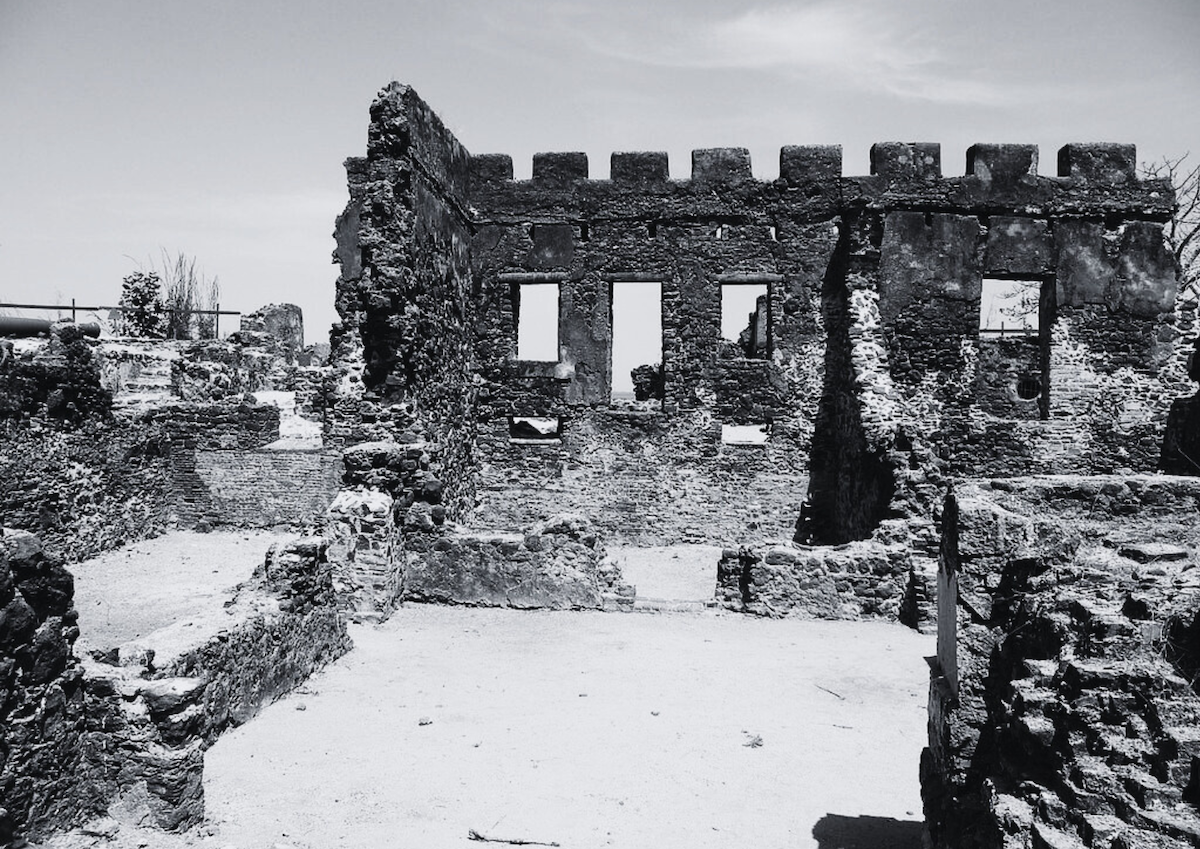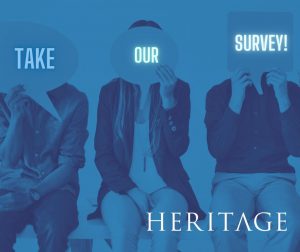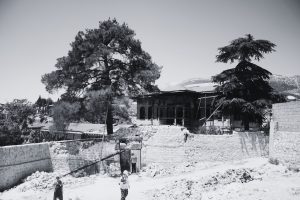Tag Archives: Heritage Management
The significance of Kunta Kinteh island and related sites
By Ebrima Jammeh*
The Gambia is the smallest country on mainland Africa, with a population of about 2 million people. It is often referred to as the smiling coast of Africa due to the friendly nature of its people. It is surrounded on all three sides by Senegal (North, South, and East) except the West, which is occupied by the Atlantic Ocean, and is divided into two halves (North and South) by the River Gambia (a freshwater river).
Having gained independence from the British in 1965, it became a Republic in 1970 under the Leadership of President Dawda Kairaba Jawara.
Kunta Kinteh Island and Related Sites: Outstanding Universal Value
Kunta Kinteh Island, formerly known as James Island, and its related sites, are a testimony to the encounter between Africa and Europe along the River Gambia, a period stretching from pre-colonial and pre-slavery times to independence. The site is particularly significant for its relation to both the beginning of the slave trade and its abolition and also documents early access to the interior of Africa.
Kunta Kinteh is a small island in the Gambia River which flows out into the Atlantic Ocean. The island’s location made it a strategic place to control the waterway. Visited by explorers and merchants in their search for a sea route to India, it became one of the first cultural exchange zones between Africa and Europe. By 1456 the Island had been acquired by Portugal from local rulers and the construction of a fort began. Kunta Kinteh Island and Related Sites form an exceptional testimony to the different facets and phases of the African-European encounter, from the 15th to the 19th centuries. The River Gambia was particularly important forming the first trade route to the inland of Africa. The site was already a contact point with Arabs and Phoenicians before the arrival of the Portuguese in the 15th century. The region forms a cultural landscape, where the historic elements are retained in their cultural and natural context. The properties illustrate all the main periods and facets of the various stages of the African-European encounter from its earliest moments in the 15th Century through the independence period.
The main focus of the Kunta Kinteh Island site was the control of the hinterland and its riches rather than control of the coast and the trade that passed along it.
The specific location of Kunta Kinteh Island and its Related Sites, at the mouth of the Gambia River, is a tangible reminder of the story of the development of the Gambia River as one of the most important waterways for trade of all kinds from the interior to the Coast and beyond. The specific, important role of the site in the slave trade, both in its propagation and its conclusion, makes Kunta Kinteh Island and its Related Sites an outstanding memory of this important, although painful, period of human history.
The property includes Kunta Kinteh Island Fort and a series of sites associated with the early European occupation of the African continent. The ensemble has seven separate locations: the whole of Kunta Kinteh Island, the remains of a Portuguese Chapeland of a colonial warehouse (CFAO Building) in the village of Albreda, the Maurel Frères Building in the village of Juffureh, the remains of the small Portuguese settlement of San Domingo, as well as Fort Bullen and the Six-Gun Battery. Fort Bullen and the Six-Gun Battery are at the mouth of the Gambia River, whilst Kunta Kinteh Island and the other sites are some 30 km upstream.
The development of Kunta Kinteh Island differed greatly from that of the many other forts, castles, and trading posts found in other parts of West Africa in that the main focus of the Kunta Kinteh Island site was the control of the hinterland and its riches rather than control of the coast and the trade that passed along it.
The Six-Gun Battery (1816) and Fort Bullen (1826), located on both sides of the mouth of the River Gambia came much later than Kunta Kinteh Island and were built with the specific intent of thwarting the trade in slaves once it had become illegal in the British Empire after the passing of the Abolition Act in 1807. They are the only known defensive structures in the region to have been built specifically to stop slaving interests. The other fortifications of the region (including Kunta Kinteh Island), were constructed as a means of enhancing and controlling the trade in slaves (and commodities) rather than stopping it. These two military positions allowed the British to take full control of the River Gambia, eventually paving the way for the establishment of the colonial government, a period well-illustrated by many colonial buildings in Banjul and the Governor’s Rest House at Fort Bullen. Finally, Fort Bullen shows evidence of its re-use during the Second World War (1939-1945) as a strategic observatory and artillery post. This later period illustrates yet another European rivalry that spread to the African continent.
The Six-Gun Battery (1816) and Fort Bullen are the only known defensive structures in the region to have been built specifically to stop slaving interests.
Site Significance
Criterion (iii): Kunta Kinteh Island and related sites on the River Gambia provide an exceptional testimony to the different facets of the African-European encounter, from the 15th to 20th centuries. The river formed the first trade route to the inland of Africa, being also related to the slave trade.
Criterion (vi): Kunta Kinteh Island and related sites, the villages, remains of European settlements, the forts and the batteries were directly and tangibly associated with the beginning and the conclusion of the slave trade, retaining its memory related to the African Diaspora.
Integrity: The six parts of the serial nomination together present a testimony to the main periods and facets of the Afro-European encounter along the River Gambia, a continuum that stretched from pre-colonial and pre-slavery times to the period of independence and in particular to the beginning and the abolition of the slave trade, as well as documenting the functions of the early access route to the inland of Africa. The six sites encompass all the key remains.
All the sites except the CFAO and Maurel Frères Buildings are ruins. The CFAO Building has been restored and provided with adequate sea defense. The Maurel Frères Building was restored in 1996 and is in a good state of conservation. The Portuguese chapel and San Domingo are in a state of ruins, but these have been stabilized, with the most endangered parts reinforced in 2000.
The isolated position of Kunta Kinteh Island in the river has conserved its setting to the present day. Fort Bullen is also bordered by the river on one side and a large open tract of land on the other, naturally serving as a buffer zone and helping to preserve its setting. It is in a relatively good state of conservation, though the wall on the seaward side is suffering from sea erosion. Parts have collapsed and 20 metres were rebuilt in 2000. The Six-Gun Battery is in a good state of conservation. The ruined sites need ongoing maintenance if they are not to deteriorate over time.
Authenticity: Kunta Kinteh Island Fort was subjected to destruction on numerous occasions. Since the last time by the French, in 1779, it has remained a ruin with only minor attempts at consolidation and minimizing the effects of sea erosion. The Island is a landmark for all concerned with the slave trade, especially the local community and Africans in the Diaspora. Apart from a short period of re-use during the Second World War. Fort Bullen and the Six-Gun Battery were similarly abandoned in the late 19th century. At San Domingo, there are very few visible remains but the area has considerable potential for archaeological research. The ruins that convey the Outstanding Universal Value are extremely vulnerable to erosion. At the time of inscription to the UNESCO World Heritage List, the ruined sites were seen to be part of a wider cultural landscape that needed protection to protect the setting of the sites and to allow them to be understood.
Protection and management requirements
Kunta Kinteh Island, Fort Bullen and all the significant historic buildings in the Albreda-Juffureh complex are legally protected as National Monuments (1995) under the National Council for Arts and Culture Act, 1989 (revised 2003). The proclamation instrument also establishes a buffer zone for all the sites that should be kept free of incompatible developments with adverse effects on their setting. As National Monuments the historic structures are under the custodianship of the National Centre for Arts and Culture (NCAC) who are responsible for their conservation and upkeep. Day-to-day management rests with the Directorate of Cultural Heritage of the NCAC, which employs a Destination Manager, Showroom attendant, site attendants and caretakers. The Six-Gun Battery is located within the State House grounds and is protected by the Office of the President. The sites also have a 5-year management plan that sets out what is acceptable at the individual site and at the national level. This plan was prepared as a result of the joint effort of ten different national and local organizations, supported by the Africa 2009 program.
The funding used for the management and maintenance of the sites is relatively limited and comes mainly from entrance fees. Every three months, the Head of the Museums and Monuments section of the NCAC performs a physical inspection of the sites. This conditional assessment is carried out with a representative of the local stakeholders and, if possible, with a local guide. A brief report is prepared after each visit and these are summarized in an annual report.
To the visitors, the property has symbolic and emotional significance, as a visit to Kunta Kinteh Island is a pilgrimage to their roots. As a piece of historical evidence, much can be learnt from the Island, and it already forms part of the history and social studies syllabus in Gambian schools.
The property contains very fragile ruins that need to be protected and conserved as the tangible elements that convey Outstanding Universal Value. There needs to be ongoing maintenance, monitoring, and conservation to allow these ruins to have the best chance of survival and be robust enough to withstand the onslaughts of nature.
Challenges Include:
- Inadequate funding to ensure constant preservation
- Climate change factors such as erosion sea level rise, weathering
- Treasure hunting
- Inadequate capacity building among the staff
Strengths: The local community is being engaged at all levels while The Gambia has in place an effective and efficient legal framework in the management system. The site’s staff is a committed team that is receiving training in heritage management from the NCAC’s partner organization, HERITΛGE, through its HerMaP Gambia program, co-funded by the European Union.
PARTNERS
The National Centre for Arts and Culture partners with the following:
HERITΛGE through its HerMaP Gambia program that is co-funded by the European Union.
UNESCO
NATCOM
Coalition of Sites of Conscience
African World Heritage Fund (AWHF)
Gambia Tourism Board (GT BOARD)
Gambia Tourism and Hospitality Institute (GTHI)
*Ebrima Jammeh is Destination Manager for The Gambia’s National Centre for Arts and Culture (NCAC). This work was first presented at the 5th World Heritage Site Managers Forum that took place earlier this year in Saudi Arabia.
Shaping the Future of our Training in North America: Your Voice Matters!
At HERITΛGE, we’re on a mission to empower heritage professionals across the world. As we expand our presence in North America, we recognize the importance of understanding the unique needs and challenges faced by heritage professionals in the region. That’s why we’re reaching out to you – the experts at the forefront of heritage preservation – to help us shape the future of heritage management training.
Your Voice, Our Vision:
North America boasts a rich tapestry of cultural heritage, from historic landmarks to indigenous traditions. To ensure that this heritage is preserved and celebrated for generations to come, we need your input. By participating in our brief survey, you’ll have the opportunity to share your insights and contribute to the development of training programs that are tailored to the needs of heritage professionals in the US, Canada, Mexica, and the wider region.
Your responses to our short survey will guide us in identifying areas for improvement and developing new initiatives that better serve the heritage community in North America.
A Chance to Win
As a token of our appreciation for your participation, we’re offering two (2) lucky participants the chance to win a scholarship to a HERITAGE online training workshop of their choosing. This scholarship, valued at $3,000, provides access to world-class training opportunities designed to enhance your skills and expertise in heritage management.
Take our Survey!
Simply click here to access the survey and share your valuable insights.
We would be very grateful if, upon completion of the survey, you shared the link with your network of heritage professionals to ensure we reach as wide a sample as possible.
Stay Connected
Be sure to follow us on LinkedIn for updates on the survey results and announcements of the scholarship winners. Together, we can make a meaningful impact on the preservation and promotion of North America’s diverse cultural heritage.
Preserving History Together: Our Cultural Heritage Assessment in Kahramanmaraş
By Çağla Parlak
We are thrilled to share our recent post-earthquake cultural heritage assessment field visit to Kahramanmaraş, Turkiye, conducted in cooperation with the Association for the Protection of Cultural Heritage. This meaningful initiative was made possible through the generous funding provided by the Aliph Foundation.
Between 23-29 July, our team of dedicated conservationists assessed 175 historic buildings in the city of Kahramanmaraş, which suffered significant damage from the February 2023 earthquakes, including awe-inspiring civil architecture and time-honored monuments, each carrying the weight of centuries of history. The devastating earthquake had left its mark, reminding us of the vulnerability of our shared cultural heritage. The once-proud monuments, centuries-old buildings, and priceless artifacts bore the scars of nature’s fury, urging us to act swiftly to protect the region’s cultural treasures.
During our site visit, we focused on assessing the extent of the damage and devising restoration strategies. What touched us most was our engagement with the locals. They welcomed us with open hearts, sharing their concerns and hopes for the future of their historic houses.
CALL FOR APPLICATIONS: SMALL GRANTS FOR AFRICAN HERITAGE PROJECTS
The Heritage Management Organization (HERITΛGE) is launching a new call for concept notes for small grants ($5000-$50000) for organizations, groups, and individuals working with heritage in Africa.
The grants are part of our Heritage Management Project – Africa (HerMaP-Africa) which is funded by the Mellon Foundation’s Humanities in Place program. They will fund projects that focus on the protection of and/or promotion of local heritage for socio-economic development in the continent.
“We are looking to untap the potential of heritage in Africa, in order to make a difference for the development of local communities, “ said HERITΛGE Director, Dr. Evangelos Kyriakidis. “Heritage has the ability to empower and we are ready to partner with local organizations around the continent to this end.”
Applicants will have to demonstrate that their project addresses one or more of three criteria:
1) Sustainability – Our focus is on projects that will have a lasting impact, much beyond the duration of the project, for example protecting heritage sites from desertification by creating green belts, preserving/stabilizing/restoring and adaptively reusing a historic building for community needs, researching the public heritage landscape, installing solar panels at heritage sites to generate income or decrease expenditure in the long term, building eco-friendly tourism infrastructure, direct interventions that strengthen social institutions, like traditional methods of mediation, etc.
2) Capacity development and network building – We encourage projects that strengthen local skills and build closer links with peer organizations in the HERITΛGE network. Examples include on-the-job training in preventive conservation (e.g clearing or fencing sites), experience and expertise exchanges with other local NGOs on shared issues such as desertification or erosion of sites, co-operative training on museum exhibition design, etc.
3) Concrete and community impact – We encourage projects with strong, measurable incomes in terms of heritage protection and benefits to local people. Each project should provide clear indicators of the planned impact. These indicators will depend on the type of work carried out but some examples include increased visitation to a heritage site or program, financial benefits to the local community in terms of increased employment opportunities or local businesses created; tourism earnings; money savings by solar panel installation; the size of area protected from desertification, etc.
To apply for these grants please complete the concept note application form you will find here.
About HerMaP-Africa: Made possible by a $5 million grant from the Mellon Foundation’s Humanities in Place program, it aims to strengthen HERITΛGE’s Africa programs, fund initiatives that link heritage with socio-economic impact, develop the capacity of local organizations, and help them preserve African heritage and culture.
About The Andrew W. Mellon Foundation: The Andrew W. Mellon Foundation is the largest supporter of the arts and humanities in the United States. Since 1969, the Foundation has been guided by its core belief that the humanities and arts are essential to human understanding. The Foundation believes that the arts and humanities are where we express our complex humanity and that everyone deserves the beauty, transcendence, and freedom that can be found there. Through its grants, it seeks to build just communities enriched by meaning and empowered by critical thinking, where ideas and imagination can thrive. Learn more at mellon.org.






